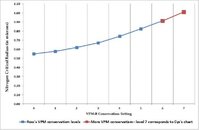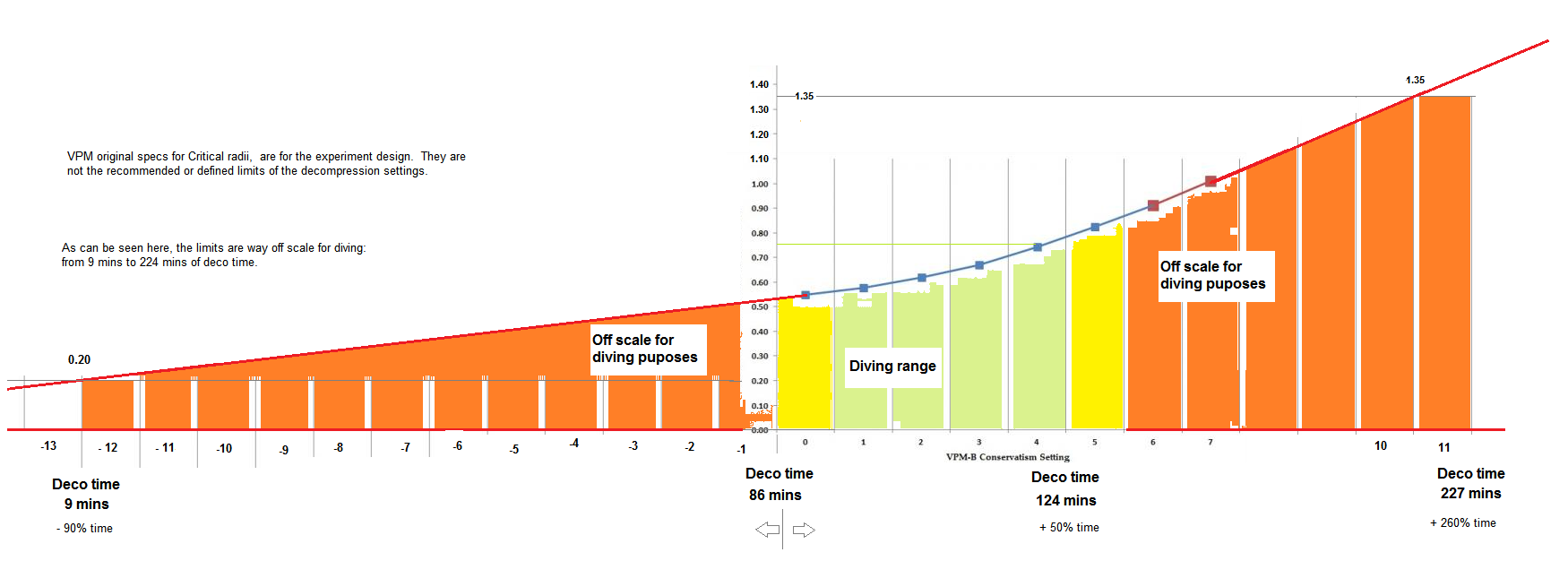So, I'm not the only one with fundamental concerns as to the nature of this dispute.
Guys, Please. Rate your approaches to decompression modeling in two categories on a 1 to 10 scale:
Deterministic vs. Probabilistic
Theoretical vs. Physical
If that doesn't work for you, please rate the other camp's approach.
Thx.
Hello,
I think you might have misinterpreted the nature of the debates that have been partially (and incompletely) represented on this thread. Both debates arise from research work published by the US Navy Experimental Diving Unit where David Doolette is one of the scientists.
The first relates to their publication (in 2011) of a study that compared (using very generic language here) a deep stop vs shallow stop approach to decompression from the same dive, and showed the deep stop approach resulted in more decompression sickness (actual cases in human subjects). Because bubble models such as VPM-B emphasise a deep stop approach, their advocates (in particular Ross) did not like this study, and have expended considerable energy trying to discredit it. The major debate took place on the RBW thread that has been mentioned multiple times here.
The second relates to their publication this year of a study that compared identical decompressions from a trimix and heliox decompressions from the same dive and found to a predetermined level of confidence that decompression from the heliox dive was not associated with worse outcomes (once again, DCS in human subjects). Combined with some animal gas kinetic work also published this year, the implication of this was that the decompression penalty often imposed for use of higher fractions of helium by many decompression models is unnecessary. Having said that, we are not convinced that this means we can be doing shorter decompressions from deep helium dives because it may be that the assumption of a "helium penalty" has resulted in us serendipitously doing the right amount of deco from deep dives where helium is typically used. Anyway, probably because the gas tracking algorithm underpinning his decompression products assumes a helium penalty, Ross does not like these studies either and has once again expended considerable energy trying to discredit them. The main debate about this took place on the CCR Explorers site that has been mentioned a few times in this thread.
Those are the topics of the debates. It has never been about deterministic vs probabilistic models though the narrative has drifted into that area once or twice in relation to a few of Ross's claims.
I hope this helps.
Simon M
---------- Post added December 24th, 2015 at 10:48 AM ----------
I would expect with a shorter deco time overall on the deep stop profile (limiting the deep stops as I suggested before) and the same curve in the shallow end, you would have fewer incidents of DCS and less super saturation overall. I would also expect the opposite to be true for the Shallow profile, where if you were to adjust it to match the runtime of the deep stop profile, you would find MORE super saturation and an increase in incidence of DCS.
Hello Tom,
No one has done the study to measure DCS, but in respect of supersaturation UWSojourner has more or less done what you said with his comparison of a VPM-B+4 and a GF 40:74 CCR decompression (using real world gases and set point parameters) over on the RBW threads. The slow tissue supersaturations are still greater in the VPM-B+4 profile as a result of its greater emphasis on deep stops early in the decompression. I am perfectly happy to admit that if you ran a study with the NEDU trial subject numbers on those two profiles you might not find a difference in outcomes. However, I struggle to believe that the result would be reversed for some reason.
Anyway, Merry Christmas.
Simon M
---------- Post added December 24th, 2015 at 11:17 AM ----------
Ross, it is a matter of public record on this thread that you have raised an allegation that there were "paid trolls" operating on the RBW thread. Since the focus of the debate has been with me, I think any reasonable person would agree that I have grounds for concern that your allegation reflects badly on me (as the person who might have paid the alleged trolls). Not surprisingly, therefore, I have asked you to back that claim up with evidence.
Your response...
You invented the fake insinuation. You invented the phony allegation.
....is neither rational (because you clearly made the allegation) nor adequate. I will keep raising this in any debate with you until you admit there is no evidence (which there cannot be because it did not happen). So you might as well get it over with now.
rossh:You are deliberately deceiving people with this stretched out fallacy justification, and you know it. deception, fallacy justification, assumption and supposition
What I know is that VPM pioneers like Baker and Maiken frequently referred to a range of micro-bubble radii (which equates with a range of conservatism settings for the model) which embraced the radius defining +7 conservatism (around 1.02 micron). An example can be found here:
http://www.decompression.org/maiken/VPM/RDPW/VPMech4/VPMech4.htm
The fact that you did not include +7 in your software package was an entirely arbitrary decision on your part (which I acknowledge you were perfectly entitled to make). But I think trying to pass it off as an invalid profile just because it looks uncomfortably like the US Navy deep stops profile is, to borrow your words, is where the "deception, fallacy justification, assumption and supposition" is occurring here.
Simon M
Last edited:







